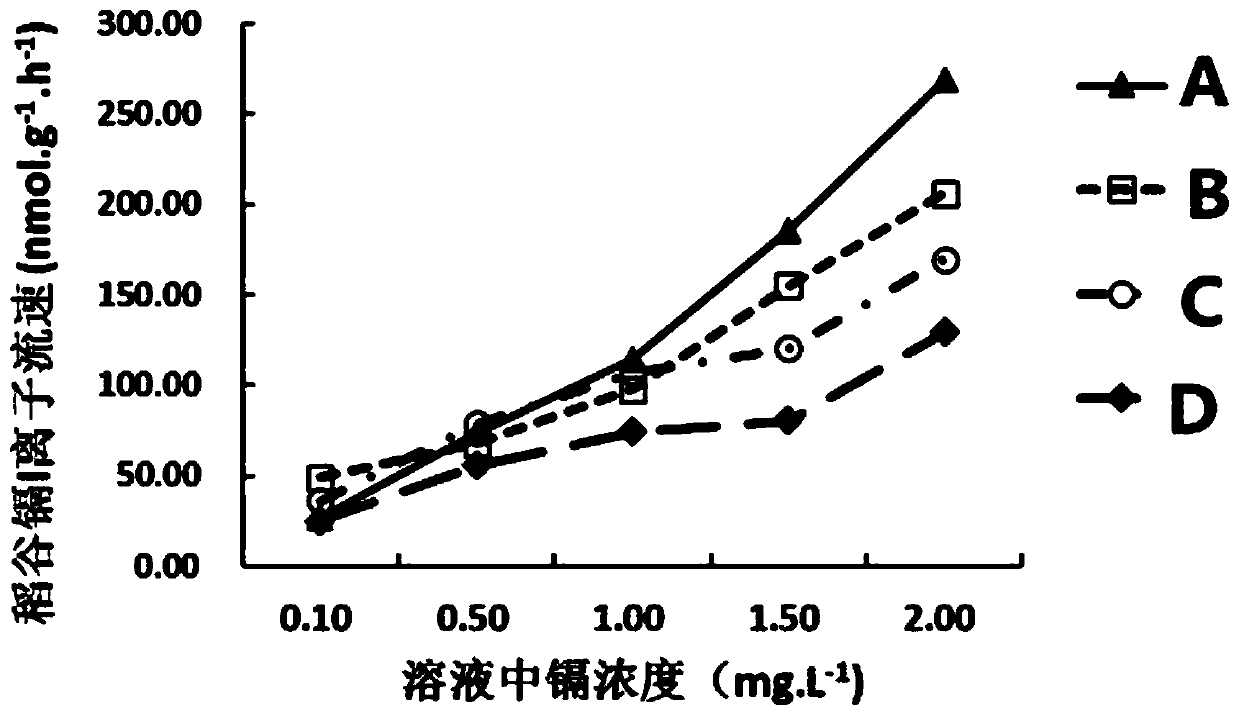Method for rapidly identifying cadmium accumulation of rice by using in-vitro rice ears
A rice ear, in vitro technology, applied in the field of detection, can solve the problems of slow screening process, long test time, and many materials required, and achieve the effect of speeding up the screening process, saving time and manpower, and having good repeatability.
- Summary
- Abstract
- Description
- Claims
- Application Information
AI Technical Summary
Problems solved by technology
Method used
Image
Examples
Embodiment Construction
[0018] The present invention will be further described below in combination with specific embodiments. It should be understood that these examples are only for illustrating the present invention and are not intended to limit the scope of the present invention. In addition, it should be understood that after reading the contents of the present invention, those skilled in the art may make various changes or modifications to the present invention, and these equivalent forms also fall within the scope defined by the appended claims of the present application.
[0019] The present invention comprises the following steps
[0020] A collects the detached rice ear sample and preserves;
[0021] B then soaking the detached ears of rice in nutrient solutions containing different cadmium ion concentrations for 48 hours, then drying the detached ears of rice;
[0022] C. Measuring the cadmium content in the isolated rice ear, recording the change of the flow rate of cadmium ions in the ...
PUM
 Login to View More
Login to View More Abstract
Description
Claims
Application Information
 Login to View More
Login to View More - R&D
- Intellectual Property
- Life Sciences
- Materials
- Tech Scout
- Unparalleled Data Quality
- Higher Quality Content
- 60% Fewer Hallucinations
Browse by: Latest US Patents, China's latest patents, Technical Efficacy Thesaurus, Application Domain, Technology Topic, Popular Technical Reports.
© 2025 PatSnap. All rights reserved.Legal|Privacy policy|Modern Slavery Act Transparency Statement|Sitemap|About US| Contact US: help@patsnap.com

